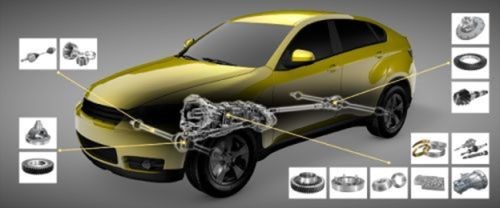Tips on Breaking Chips When Turning Transmission Parts
Components for automotive transmissions are typically made of ductile steels such as SAE 1018, 1020 and 8620. Turning these parts is often plagued by problems with long, stringy chips. This article from Sandvik Coromant addresses the complex variables and strategic trade-offs that must be considered in designing the most effective insert for this application. The insights into the problem and its solution will help anyone think more clearly about vexing chip control issues.
Share






Components for automotive transmissions are typically made of ductile steels such as SAE 1018, 1020 and 8620. Turning these parts is often plagued by problems with chip control, especially the tendency for these materials to produce long, stringy chips that interfere with efficient operation and/or automated production. This article from Sandvik Coromant addresses the complex variables and strategic trade-offs that must be considered in designing the most effective insert for this application. The insights into the problem and its solution will help anyone think more clearly about vexing chip control issues.
Related Content
-
Shoulder Milling Cuts Racing Part's Cycle Time By Over 50%
Pairing a shoulder mill with a five-axis machine has cut costs and cycle times for one of TTI Machine’s parts, enabling it to support a niche racing community.
-
How to Mitigate Chatter to Boost Machining Rates
There are usually better solutions to chatter than just reducing the feed rate. Through vibration analysis, the chatter problem can be solved, enabling much higher metal removal rates, better quality and longer tool life.
-
Measuring Torque, Thrust Force for Smart Drilling Operations
To monitor drilling operations for smart manufacturing solutions, torque and thrust force can be measured.














